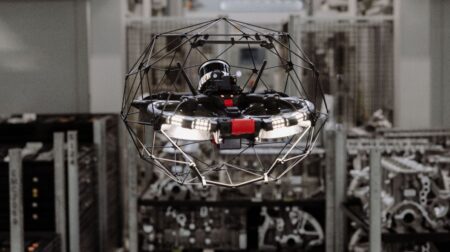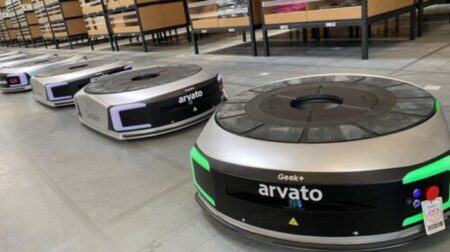The UK government has announced a £5bn investment package as part of the Strategic Defence Review 2025 (SDR), with robotics and autonomous systems identified as key areas of focus.
More than £4bn of the funding is allocated to the development and deployment of autonomous systems across land, sea, and air domains. A further £1bn is designated for directed energy weapons (DEW).
The investment forms part of a broader strategy to increase the UK’s defence spending to 2.5% of GDP by 2027 and reflects an emphasis on modernising military capabilities in response to evolving operational requirements.
According to the SDR, the integration of uncrewed and autonomous systems in large numbers is a stated priority for the armed forces over the next five years.
The systems are intended to complement existing platforms and are expected to provide enhanced operational effectiveness through increased precision, reduced human exposure to risk and lower operating costs.
A new drone centre will be established to facilitate the development and deployment of small uncrewed aerial systems (UAS).
The facility will support accelerated research, address regulatory and legislative considerations, and act as a hub for collaboration between defence, industry, and academia.
It will also incorporate operational feedback from recent conflicts where uncrewed systems have demonstrated significant impact.
UK defence secretary John Healey said: “We are delivering the Strategic Defence Review’s vision to put the UK at the leading edge of innovation in NATO, by backing British industry and fast-tracking the kit of the future into the hands of frontline troops.”
In parallel, the government will create UK Defence Innovation (UKDI), a dedicated organisation to support the identification and adoption of dual-use technologies, including robotics, AI, and autonomous systems.
UKDI will manage a ring-fenced annual budget of £400m and will focus on bridging the gap between research and operational deployment.
The SDR outlines a transition toward an integrated force model, combining conventional platforms with advanced digital, autonomous, and AI-enhanced systems.
The approach is intended to improve operational flexibility, support interoperability within NATO, and ensure that the armed forces remain capable in high-intensity conflict environments.
Chancellor Rachel Reeves said: “A strong economy needs a strong national defence. That’s why we are delivering the biggest sustained increase in defence spending since the Cold War – putting innovation and industrial strength at the centre of our national security strategy.”
The government expects that the investment in autonomous systems and DEW will contribute to the creation of 300 new skilled roles across defence and industry.
This forms part of a wider plan to increase the contribution of the defence sector to the national economy and to support the UK’s industrial base in areas such as robotics, sensor technologies and advanced manufacturing.
The SDR also proposes reforms to procurement processes, aiming to reduce development and acquisition timescales for new technologies.
This includes a segmented procurement strategy, with an emphasis on modular platforms, spiral upgrades, and rapid commercial exploitation.
The intent is to enable faster fielding of systems and to better align industrial output with operational requirements.
The Strategic Defence Review sets a 10-year path for UK defence policy and capability development, with robotics and autonomous systems positioned as a central element of the transformation.









